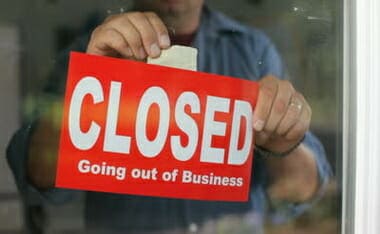Larry Elder goes through the most recent “pro-Biden Screed” by Michelle Obama. Larry Elder lays out a negative and positive case for Trump… but even with Trump’s negatives, he is far better than Biden [now] and Hillary [previously]. Let me say also, while I can tell when Prager gets mad about a subject… people show anger in differing ways. I believe this is about the most upset that I have heard Larry on a topic. It may not sound like it — but I have been listening to the many for YEARS.
Anti-Business


Are Medical Insurance/Big-Pharma Company Profits… Evil?
R & D Costs for “Big Pharma”
This comes via ChEMBL-og:
Came across a link on Google+ to a post to a Forbes article (via Greg Landrum) and thought I would post a link here. It’s a simple economic analysis of the costs of Large Pharma drug discovery. Very simple, money in vs. drugs out. There is however a lot of complexity behind the numbers, for example – quite a few of the drugs will have been licensed in, the transaction costs for these in-licensing events have probably been factored in, but what about all the other burnt capital in the biotech companies that supplied the in-licensed compounds – this will inflate the numbers further. Of course the majority of these costs are incurred on the failed projects, the wrong targets, the wrong compounds, or the wrong trials.
To put the AstraZeneca number of $11.8 billion per drug in some national context (equivalent to £7.5 billion) – this is almost 17 years of the entire BBRSC budget (£445 million in 2011), or only two drugs from the entire investment portfolio of the mighty assets of the Wellcome Trust (~£14 billion in 2011) – that’s right, not two drugs from their annual research budget, but two drugs by shutting down the investment fund and putting it all into drug discovery and development (at Astra Zeneca ROI levels).
Scary numbers, eh? Are public funding agencies up to the task? Do we really know what to do differently? There’s also a POST on the same Forbes article on the In THE PIPELINE BLOG.
(An updated Forbes article is HERE)

Jerry Brown Just Destroyed California’s Economy (SB 32) |UPDATED|
California’s annual statewide greenhouse gas (GHG) emission inventory is an important tool for establishing historical emission trends and tracking California’s progress toward the goal set by the Global Warming Solutions Act of 2006 (AB 32).The law set a target of reducing emissions to 1990 levels by 2020.
[….]
Governor Edmund G. Brown, Jr. recently established a 2030 greenhouse gas reduction goal of 40 percent below 1990 levels, an interim target toward meeting the 2050 goal of reducing emissions 80 percent below 1990 levels.
(California Air Resourse Board [CARB] — see more in the APPENDIX)
John and Ken discuss how Governor Jerry Brown may have just bankrupted California.
Some main points about the bill:
➤ The new SB 32 requires a massive 40 percent cut from 1990 levels, with a deadline of December 31, 2030. The Bee reports that the new measure gives CARB extended authority to force the extreme reductions upon Californians without setting the parameters of those regulations …. Two related bills, AB 1550 and AB 2722, set out the wealth redistribution piece of the regulatory scheme, taking moneys collected in fines and through extorting businesses and forcing those funds to be spent in districts represented by many legislators voting for SB 32… (BREITBART)
➤ According to author Brad Plumer: “It’s hard to overstate how ambitious this is. Few countries have ever achieved cuts this sharp while enjoying robust economic growth.” The only countries (France and Sweden) that have achieved this, he wrote, did so by increasing their use of nuclear power — something off the table in anti-nuke California. “It will mean reshaping virtually every facet of the state economy, from buildings to transportation to farming and beyond,” he added. “California is essentially offering itself as a guinea pig in the world’s most important policy experiment.”…. What’s really troubling, however, is what these measures will mean for the state’s economy. The additional costs imposed by CARB bureaucrats will make it tougher to keep manufacturing and agricultural jobs from fleeing. Additional land-use edicts mandating fewer suburban developments and an end to major freeway construction will mean higher home costs and more congestion. Radical policies will lead to radical results. This isn’t scare mongering. It’s just the truth. (AMERICAN SPECTATOR)
➤ But it was driven by legislators in poor communities who are critical of the current cap-and-trade system that, according to the Capital & Main blog, “allows big polluters to pollute as long as they pay for credits or offsets purchased in other parts of the state or country. AB 197 requires that the (CARB)… target direct reductions at both stationary and mobile sources in those communities.” Another apparent goal is to force CARB to spend money from the cap-and-trade system more equitably in poorer legislative districts. (IBID.)
Energy prices, food prices, car costs, etc., will all go up. As California becomes more expensive as a state to do business in, MORE businesses will leave and jobs will be lost. It will leave only the giants in business being able to pay for the extra costs, thus, whittling out competition. California will have a few large corporations left in it as well as a few large unions… all subsidizing the Democrat Party to force competition out of their markets.
The L.A. Times notes this as well:
…“You’re going to be increasing the cost of moving goods through California ports,” said Jock O’Connell, a trade expert at Los Angeles consulting firm Beacon Economics.
Feisty competitors on the South and East coasts have been eating into Los Angeles-area ports’ business, and in June the Panama Canal opened wider channels that may divert more traffic away.
“At some point [importers] reach a tipping point where they say it makes more sense to send goods through Houston, or Charleston,” O’Connell says.
That could be a threat to the hundreds of thousands of Californians who are directly or indirectly employed by port business. “You wind up jeopardizing an awful lot of blue collar workers,” O’Connell said.
Brown dismissed the concerns of business leaders as “very dubious”. This, despite the fact an analysis cited in the article indicates that implementation could cost the state over 300,000 jobs.
This is really a back-door way to implement the previously failed SB 350 and more in order to tax people for California’s unfunded liabilities. JOHN & KEN previously discussed SB 350 noting the harmful effects it would have.
In an excellent article over at the WASHINGTON TIMES, we read this:
Fleeing California: A hostile business climate sends more companies to friendlier states
More than a century ago, Roy Farmer, 20, went door-to-door in Los Angeles with his bags of home-roasted coffee beans. By the 1930s, Farmer Brothers was selling coffee to restaurants throughout the nation. Today the company employs 1,200 men and women and generates $200 million in annual sales to restaurants, convenience stores, hospitals, hotels and universities.
But after surviving depressions, recessions, earthquakes and wars, Farmer Brothers is leaving California, finally driven out by high taxes and oppressive regulations.
The company says it’s fleeing in search of a place where business is appreciated. Relocating its corporate headquarters and distribution facilities from to a friendlier location, Farmer Brothers expects to save $15 million a year. Company executives are looking at Dallas and Oklahoma City. The relocation will bear real consequences for California. Nearly 350 workers will lose their well-paying jobs in Los Angeles alone….
Of course I have been talking about this for years (CARL’S JR. as one example), and posting audio on this issue for years as well…
When California makes it too expensive for alternative energy companies to survive in this state… you know the chickens are coming home to roost!
APPENDIX
The question my wife asked, very astutely, is what are these numbers we are talking about. Here they are:
…Getting to the 2030 and 2050 cuts that California seeks will require steeper cuts than the state has yet experienced over an extended period. Reducing greenhouse gases to the 2020 levels ordered by AB 32 requires a cut of 5.5 percent between 2010 and 2020. Brown’s executive order requires a 40 percent cut below the 2020 target by 2030. That means, in theory, that California would need to reduce emissions about 7 times as quickly between 2020 and 2030 as between 2010 and 2020.
In practice, however, the acceleration may not be quite so dramatic. That’s because most experts expect California to come in below its 2020 targets. If, for example, California’s emissions come in at around 400 million metric tons of carbon dioxide equivalent in 2020, rather than at 431 (the figure needed to exactly meet its 2020 goal), California would need to cut emissions roughly three times faster between 2020 and 2030 than during the preceding decade.
Between 2030 and 2050, emissions will also need to decline much more quickly than has been the case in recent years.
These calculations come with one slight caveat: the state has specified its long-term goals only in terms of percentage reductions, rather than in terms of exact emissions figures. But the exact numbers, when they are formulated, are expected to be roughly what the percentages suggest (eg, around 260 million metric tons of carbon dioxide equivalent for 2030, and 85 metric tons in 2050).
Here is page one of a more bullet pointed and graphed path (click it for the PDF) to these reductions that are impossible and is only a way for the state to gain more monetary resources to pay for their B.S.
- A mere 2% of the carbon emissions credits that the California Air Resources Board (CARB) put up for auction in May were sold. The quarterly auction raised only $10 million of the $500 million that CARB projected. That’s awful news for Democrats in Sacramento who planned to spend the windfall on high-speed rail, housing and electric-car subsidies. (WSJ)
According to the Vermont Senator’s website, the Democratic Party draft platform reads:
- “Democrats believe that climate change is too important to wait for climate deniers and defeatists in Congress to start listening to science, and support using every tool available to reduce emissions now.” (Global Warming Is Too Important To Wait For Democracy)
Too important to wait for Congress? Which is why stuff like the above have to be passed via executive order — like Jerry Brown did. Whether on the state or federal levels, Democrats love growing government and regulating every aspect of the citizens life… by fiat. King George is back. It is merely “King George” forcing policies the public would never approve of:
Brown appears bent on forcing cap-and-trade on Californians, stating last month that “they’re going to plead for a market system called cap-and-trade so they can respond in a way that’s more beneficial to their bottom line.” The Bee reported that Brown also lambasted his opponents in Sacramento, calling them “Trump-inspired acolytes,” but concluded that “they have been vanquished” with the passage of SB 32.
THERE MAY BE A FAIL-SAFE HOWEVER!
In an excellent post at CLIMATE UNPLUGGED, it is noted that this signing into law by fiat would still need to pass a “California appellate court will soon rule as to whether it violates Proposition 13”
In 2006, the California Legislature enacted AB 32, which mandated that statewide greenhouse gas emissions be reduced to 1990 levels by 2020. California’s cap & trade auction system followed. Last week the Legislature passed SB 32, which extends and deepens AB 32’s original mandate, requiring the state to further reduce emissions to 40% below the 1990 level by 2030. This is ambitious, to say the least, in a state where all of the “low hanging fruit” (cheap emissions reduction) has presumably been harvested.
None of this is news. Nor is it news that the legality of the entire cap & trade structure is on thin ice. A California appellate court will soon rule as to whether it violates Proposition 13 (yes, that Prop 13, for those of you who remember it) insofar as AB 32 did not pass both houses of the Legislature with the requisite 2/3 vote needed for tax increases. And even if AB 32 survives, few lawyers expect the new, post-2020 authorization to pass the forthcoming Prop 26 challenge. Enacted after AB 32 (and so not applicable to it), Prop 26 was explicitly designed to close the many loopholes the politicians exploited to get around Prop 13’s vote requirements.
The “good” news for California is that if its cap & trade system gets overturned, the Air Resources Board must still hit the 2020 and 2030 targets. The bad news is that it will have to achieve truly massive emissions reductions at a breakneck pace solely via pure command and control regulations….
I hope the court sees the unconstitutionality [California’s constitution] of this and kills it all!

More Business Closings Than Start-Ups Under Barack Obama
Democratic Liberalism, Regulating Businesses Out of Business
Dennis Prager Reads from a NY-Post Article about the Hypocrisy of the Left and Their Investments with Bain Capital (article posted below audio)
I am posting an important article here from the New York Post that makes one’s jaw drop! Deroy Murdock hit one out of the park with this article!
Look who parks their cash at Bain
Democrats convened in Charlotte, NC, will double down on their claim that Bain Capital is really the Bain crime family. They will accuse Republican nominee Mitt Romney and Bain’s other “greedy” co-founders of stealing their winnings, evading taxes and lighting cigars with $100 bills on their yachts.
But Bain’s private-equity executives have enriched dozens of organizations and millions of individuals in the Democratic base — including some who scream most loudly for President Obama’s re-election.
Government-worker pension funds are the chief beneficiaries of Bain’s economic stewardship. New York-based Preqin uses public documents, news accounts and Freedom of Information requests to track private-equity holdings. Since 2000, Preqin reports, the following funds have entrusted some $1.56 billion to Bain:* Illinois Municipal Retirement Fund ($2.2 million)
* Indiana Public Retirement System ($39.3 million)
* Iowa Public Employees’ Retirement System ($177.1 million)
* The Los Angeles Fire and Police Pension System ($19.5 million)
* Maryland State Retirement and Pension System ($117.5 million)
* Public Employees’ Retirement System of Nevada ($20.3 million)
* State Teachers Retirement System of Ohio ($767.3 million)
* Pennsylvania State Employees’ Retirement System ($231.5 million)
* Employees’ Retirement System of Rhode Island ($25 million)
* San Diego County Employees Retirement Association ($23.5 million)
* Teacher Retirement System of Texas ($122.5 million)
* Tennessee Consolidated Retirement System ($15 million)
These funds aggregate the savings of millions of unionized teachers, social workers, public-health personnel and first responders. Many would be startled to learn that their nest eggs are incubated by the company that Romney launched and the financiers he hired.
Leading universities have also profited from Bain’s expertise. According to Infrastructure Investor, Bain Capital Ventures Fund I (launched in 2001) managed wealth for “endowments and foundations such as Columbia, Princeton and Yale universities.”
According to BuyOuts magazine and S&P Capital IQ, Bain’s other college clients have included Cornell, Emory, the Massachusetts Institute of Technology, Notre Dame and the University of Pittsburgh. Preqin reports that the following schools have placed at least $424.6 million with Bain Capital between 1998 and 2008:
* Purdue University ($15.9 million)
* University of California ($225.7 million)
* University of Michigan ($130 million)
* University of Virginia ($20 million)
* University of Washington ($33 million)
Major, center-left foundations and cultural establishments also have seen their prospects brighten, thanks to Bain Capital. According to the aforementioned sources, such Bain clients have included the Charles Stewart Mott Foundation, the Doris Duke Foundation, the Metropolitan Museum of Art, the Ford Foundation, the Heinz Endowments and the Oprah Winfrey Foundation.
Why on Earth would government-union leaders, university presidents and foundation chiefs let Bain oversee their precious assets?
“The scrutiny generated by a heated election year matters less than the performance the portfolio generates to the fund,” California State Teachers’ Retirement System spokesman Ricardo Duran said in the Aug. 12 Boston Globe. CalSTRS has pumped some $1.25 billion into Bain.
Since 1988, Duran says, private-equity companies like Bain have outperformed every other asset class to which CalSTRS has allocated the cash of its 856,360 largely unionized members.
Is Bain really a gang of corporate buccaneers who plunder their ill-gotten gains by outsourcing, euthanizing feeble portfolio companies and giving cancer to the spouses of those whom they fired? If so, union bosses, government retirees, liberal foundations and elite universities thrive on the wages of Bain’s economic Darwinism.
If, however, these institutions relish the yields that Bain Capital generates by supporting start-ups and rescuing distressed companies, 80 percent of which have prospered, then this money is honest — and Team Obama isn’t.
WOW!
The California [Taxpayer Funded] Bullet Train vs. Private Business
West Coast Blog has this story about the final cost — so far — of the California boondoggle known as the Bullet Train:
Bullet Train From SF to LA Doesn’t Cost $33.6 Billion Anymore… Try $100 Billion!
Ok, so that headline may sound like Dr Evil from the Austin Powers movies. How many of you actually read it in the Dr Evil voice? But even though it wasn’t Dr Evil speaking the headline, it sure feels like he is controlling the budget for high-speed rail project in California.
The high-speed rail project was approved to build a bullet train, very similar to those in Europe and parts of Asia, to connect San Francisco and Los Angeles. It would cut the traveling time between the two cities from 5-6 hours (by car) down to 2 Hours 40 Minutes. When it was passed 3 years ago, the estimated cost was $33.6 Billion broken down as follows:
$15 Billion – Federal Government
$5 Billion – Local Government
$10 Billion – Private Investors
Remainder – California
But in the last 3 years, the California High-Speed Rail authority has had problems raising money from private investors. Surprise? Not only has the project had trouble finding investors, the estimated date of completion of 2020 has been pushed back to 2033. This delay in time has caused the majority of the cost increases and estimated costs are now expected at $100 Billion. FYI: the entire California state budget is only $86 Billion.
Take note the almost instantaneous ballooning effect of the total cost via government meddling, here is the L.A. Times giving the most recent total cost update:
As the price tag for California’s bullet train has soared to nearly $100 billion, a central argument for forging ahead with the controversial project is an even loftier figure: the $171 billion that promoters recently estimated will be needed for new roads and airports if no high-speed rail is built….
….The bullet train is aimed at meeting future transportation needs of the state….
Newsflash! People are leaving California, not coming to it!
Another L.A.Times story says this:
…When the first business plan surfaced, it projected a $34-billion cost. By 2009, the estimate had jumped to $43 billion, in part because the authority included future inflation in the estimated cost of building the system over the next decade.
In August, the authority released two planning documents that signaled even higher costs. The cost of building only the first two segments in the Central Valley had jumped in price by as much as 100%, not including future inflation…
And HotAir points out the death knell for this type of liberal thinking:
CA auditor warns bullet train project financing “increasingly risky”
Few people probably noticed the absence of “high-speed rail” from Barack Obama’s State of the Union speech last night. The issue took a prominent position in SOTU speeches in 2011, when Obama dedicated five paragraphs to pushing it, and in 2010, when Obama promoted the high-speed rail project in Florida that Governor Rick Scott killed. Last night’s mentions: zero.
Perhaps the White House didn’t have a good answer as to why their pet rail project in California has become so expensive and bloated that the state auditor issued a warning hours before the SOTU began about its financing becoming so “increasingly risky” that state lawmakers should consider whether to proceed (via Andrew Malcolm):
In the latest in a series of cautionary reports by outside agencies and groups, the auditor’s report finds that the California High-Speed Rail Authority has made some progress in addressing planning and fiscal concerns but still has important work to do to ensure that the project can be built as promised.
“The program’s overall financial situation has become increasingly risky, in part because the authority has not provided viable funding alternatives in the event its planned funding does not materialize,” the auditor’s report says.
The authority has secured $12.5 billion for the first leg — from Los Angeles to San Francisco — of what is planned to be an 80-mile network, according to the report says. But it notes the projected cost of that phase has risen to between $98.1 billion and $117.6 billion.
The auditor warns that the state has no clear way to raise the $105 billion in funding necessary to complete the project, but that’s just half of the problem:
“The success or failure of the program” depends on obtaining up to $105 billion in additional funding, which has not been identified, the report says. It also finds that cost estimates for the initial phase do not include operating or maintenance outlays, which the auditor estimates could total $97 billion between 2025 and 2060.


